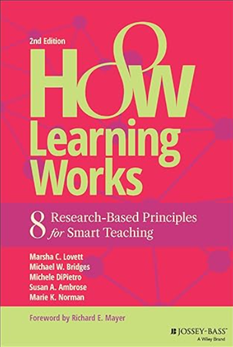How Learning Works: 8 Research-Based Principles for Smart Teaching
Our teaching is only as good as the learning it produces. As experts in our respective
fields, we already possess deep content knowledge, but that is only half of the story.
What we try to pass on to students has to be interpreted and processed through their
filters, often with unpredictable and surprising results. Therefore, the biggest investment
we can make to enhance our teaching is to understand the learning process in order
to tailor our efforts to produce maximal learning. Learning science is a very interdisciplinary
field, drawing from cognitive, motivational, and developmental psychology; education;
organizational and group learning; and several other disciplinary perspectives. Lovett,
Bridges, DiPietro, Ambrose, and Norman (2023) reviewed the literature on learning
published over the course of the past 60+ years and organized it into eight principles
that can guide us in our teaching.













